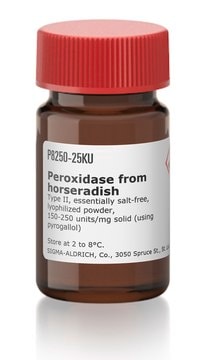A4108
Aminophenyl fluorescein solution
5 mM in DMF, suitable for fluorescence
Synonyme(s) :
2-[6-(4′-amino)phenoxy-3H-xanthen-3-on-9-yl]benzoic acid solution, APF solution
About This Item
Produits recommandés
Forme
liquid
Niveau de qualité
Concentration
5 mM in DMF
Adéquation
suitable for fluorescence
Température de stockage
2-8°C
Catégories apparentées
Description générale
Fluorescence intensity increases after reaction with hROS (e.g. hydroxy radical, peroxynitrite and hypochlorite). And, APF is resistant to light-induced autoxidation.
Application
Mention d'avertissement
Danger
Mentions de danger
Classification des risques
Acute Tox. 4 Dermal - Acute Tox. 4 Inhalation - Eye Irrit. 2 - Flam. Liq. 3 - Repr. 1B
Code de la classe de stockage
3 - Flammable liquids
Classe de danger pour l'eau (WGK)
WGK 2
Point d'éclair (°F)
135.5 °F - closed cup
Point d'éclair (°C)
57.5 °C - closed cup
Équipement de protection individuelle
Eyeshields, Faceshields, Gloves, type ABEK (EN14387) respirator filter
Certificats d'analyse (COA)
Recherchez un Certificats d'analyse (COA) en saisissant le numéro de lot du produit. Les numéros de lot figurent sur l'étiquette du produit après les mots "Lot" ou "Batch".
Déjà en possession de ce produit ?
Retrouvez la documentation relative aux produits que vous avez récemment achetés dans la Bibliothèque de documents.
Les clients ont également consulté
Notre équipe de scientifiques dispose d'une expérience dans tous les secteurs de la recherche, notamment en sciences de la vie, science des matériaux, synthèse chimique, chromatographie, analyse et dans de nombreux autres domaines..
Contacter notre Service technique












